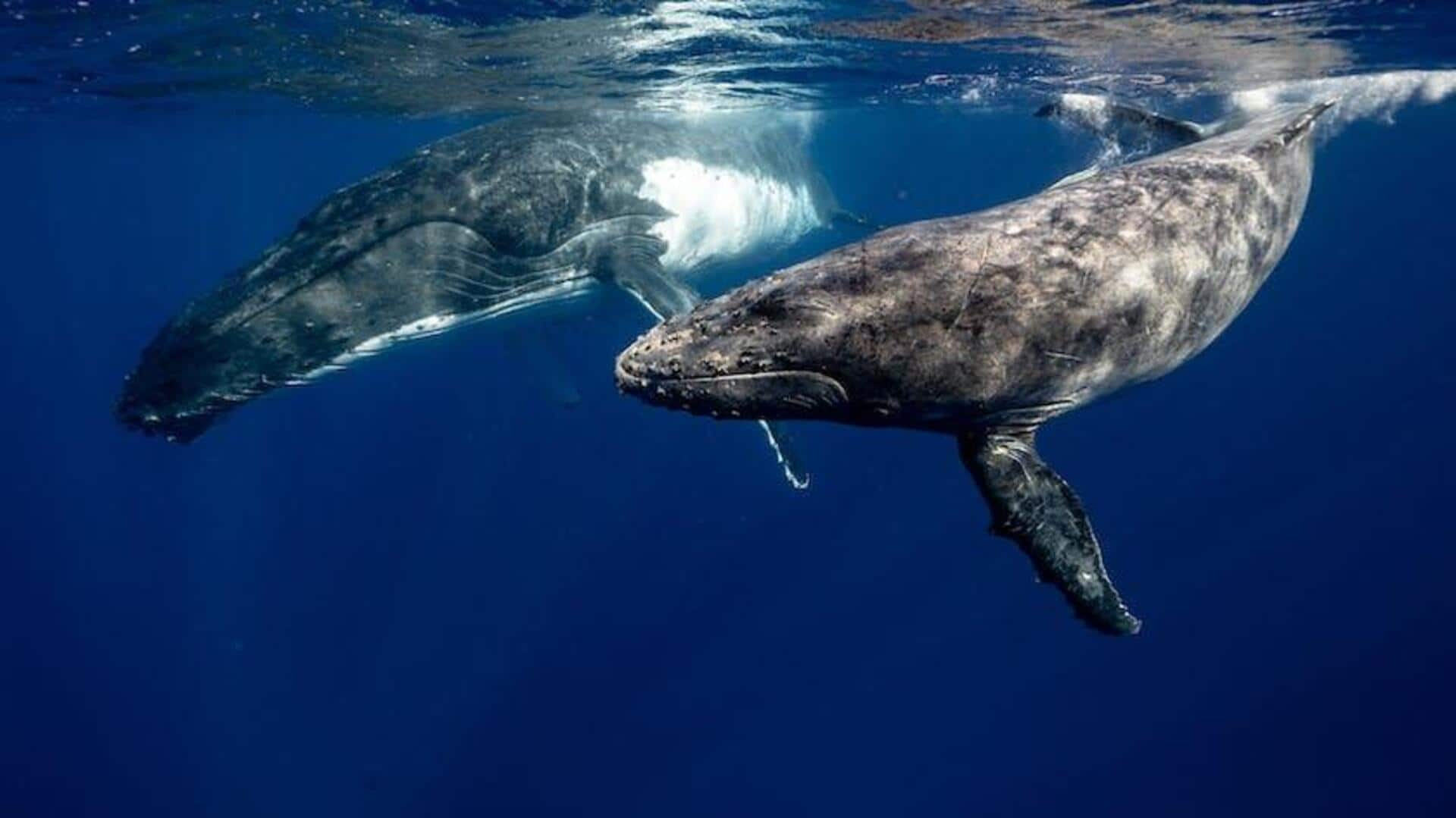
Unseen and silent: Threat of noise pollution to marine life
What's the story
In recent decades, there has been a significant surge in ocean noise pollution, posing a severe threat to marine species that heavily rely on sound for their survival. The ocean soundscape has been disrupted largely due to the presence of ships, seismic surveys, explosions, construction activities, and sonar devices. Let us understand how noise pollution's detrimental effects disrupt marine life functions.
Marine life
Sound dependent
Underwater sound plays a crucial role for numerous marine animals, especially mammals like whales, dolphins, and porpoises, which heavily depend on it due to limited visibility in the water. Sound transmission is highly effective underwater, making it a key sensory signal for these species. They utilize sound for various essential activities, including communication, locating mates and prey, evading predators, navigation, and territorial defense.
Adverse affects
Panic and anxiety
Intense underwater sounds disrupts vital life functions for marine mammals. These include both temporary and permanent hearing loss or acoustic trauma, alterations in behavior and physiology, injuries. When these animals are in close proximity to the sound source, they may experience panic, prompting them to ascend rapidly in an attempt to escape the disruptive noise, known to cause decompression sickness.
Mass stranding in whales
Naval sonar devices
Naval sonar devices emit the loudest underwater noise, employing a mechanism similar to echolocation used by whales and dolphins, with the ability to travel vast distances underwater. Beyond causing immediate damage such as hearing loss, these powerful sounds have raised international concerns about their impact on cetaceans, highlighted by a well-publicized mass stranding of beaked whales in the Bahamas in 2000.
Other instances
Indian Ocean mass stranding
Subsequent to this event, mass strandings linked to naval exercises have expanded to include other species like beaked whales, dwarf and pygmy sperm whales, with notable occurrences in the northern Indian Ocean coinciding with naval activities. Subsequent to such incidents, awareness has been raised regarding additional mass strandings associated with sonar usage, leading to an expanded list of affected species.
How
How are whales impacted
Noise pollution does not merely limit the communication range of marine mammals; it induces alterations in their vocal behavior as well. In response to noise, marine mammals may also resort to compensatory measures such as lengthening their signals, amplifying the volume of their calls, adjusting sound frequencies, or delaying signaling until the noise subsides. However, these adaptations come at a cost to the animals.
Steps
What can be done
Evidently, noise pollution adversely affects marine species already grappling with climate change and overfishing. Urgent measures are essential to curb anthropogenic noise, including policies targeting ship propeller noise and mitigating sounds from sonar, seismic air guns, and construction. Development of quieter technologies is crucial, promising a restored ocean soundscape and potential recovery for marine life amid these multiple environmental challenges.